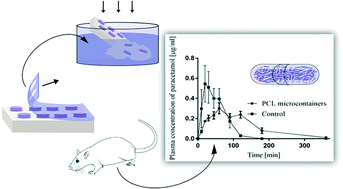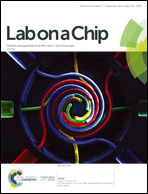Biodegradable microcontainers – towards real life applications of microfabricated systems for oral drug delivery†
Abstract
Microfabrication techniques have been applied to develop micron-scale devices for oral drug delivery with a high degree of control over size, shape and material composition. Recently, microcontainers have been introduced as a novel approach to obtain unidirectional release to avoid luminal drug loss, enhance drug permeation, protect drug payload from the harsh environment of the stomach, and explore the ability for targeted drug delivery. However, in order to eventually pave the way for real life applications of these microfabricated drug delivery systems, it is necessary to fabricate them in biodegradable materials approved for similar applications and with strategies that potentially allow for large scale production. In this study, we for the first time evaluate biodegradable microcontainers for oral drug delivery. Asymmetric poly-ε-caprolactone (PCL) microcontainers with a diameter of 300 μm and a volume of 2.7 nL are fabricated with a novel single-step fabrication process. The microcontainers are loaded with the model drug paracetamol and coated with an enteric pH-sensitive Eudragit® S100 coating to protect the drug until it reaches the desired location in the small intestine. In vitro dissolution studies are performed to assess the drug load and release profile of the PCL microcontainers. Finally, in vivo studies in rats showed a higher bioavailability compared to conventional dosage forms and confirm the potential of biodegradable microcontainers for oral drug delivery.



 Please wait while we load your content...
Please wait while we load your content...